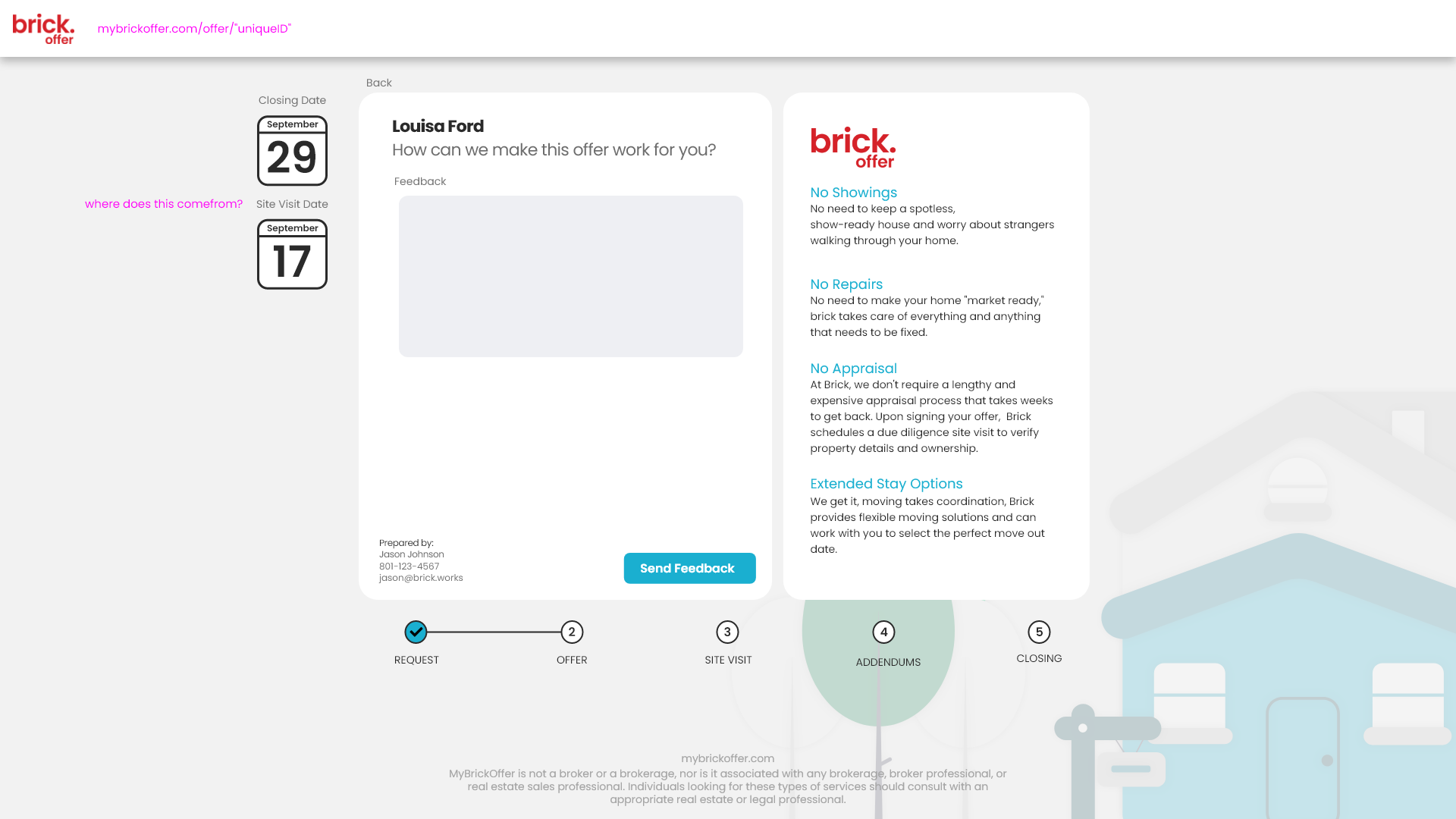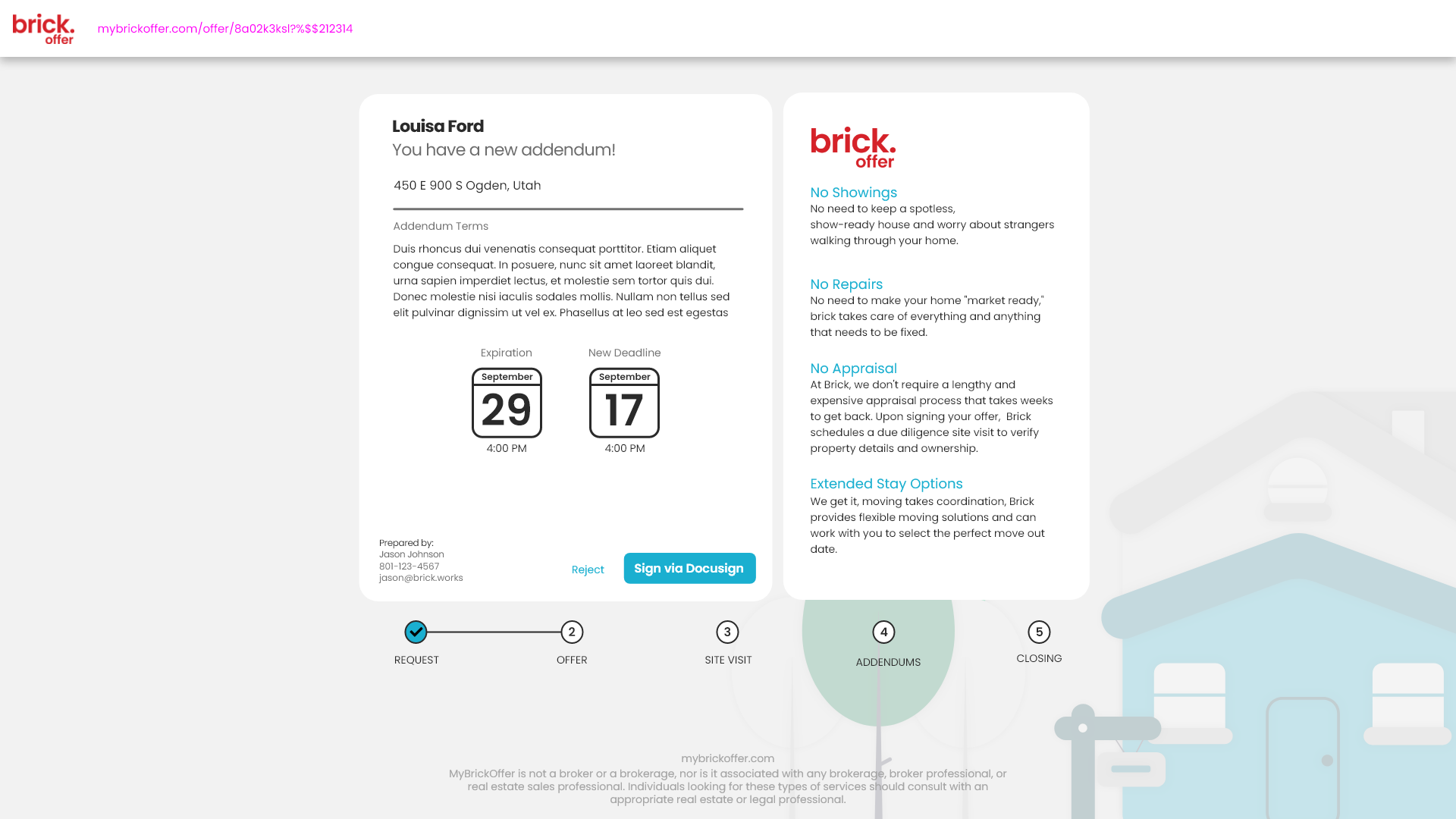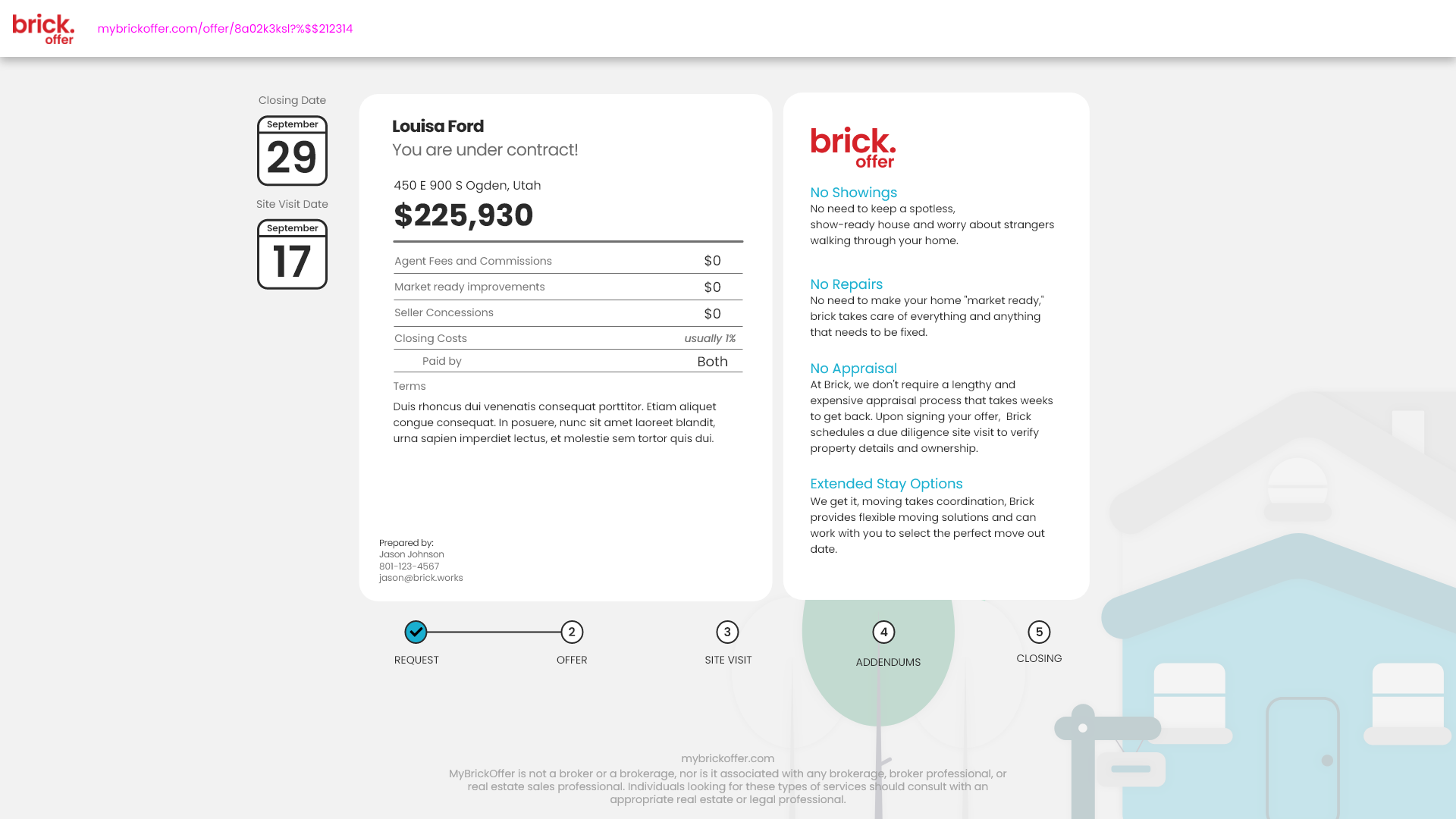Lead Gen | My Brick Offer
Company
Brick is a real estate and property management startup based out of Utah. I joined the company in its early stages and worked with the founders to build a brand, design software and experiences and craft strategy for the product and it's development. this included several pivots as we worked to find our place in the crowded prop-tech market.
Deliverables:
- Interaction Design
- High Fidelity Interactive Prototypes for Key tasks
- UI/UX Design
- Personas
- User Journeys and Task flow
- Site Map
- High Fidelity Mockups and Prototypes
- Usability Testing
My Roles:
- User Experience (UX) Designer
- User Interface (UI) Designer
- Interaction (IxD) Designer
- Visual Designer
Specifications:
Duration: 1 Week Initial MVP, Ongoing Development and Testing
Tools: Figma, Adobe Illustrator, Adobe Photoshop

Overview
During the early stages of this project and our software builds we got most of the functionality we needed through a combination of api calls, prebuilt DocuSign solutions and clever usage of our email send service, Sendgrid. The main objective was to facilitate home sellers easily reviewing an offer with an agent and then seamlessly transitioning to signing the REPC document. As we grew it became obvious we needed a more tailored and custom approach to this process that would allow agents to handle multiple transactions processes at once.
Design Process
Research & Define Problems
As part of building the Kiln Software we scoped out the path that a real estate transaction would take through our system. This needed to include the sales funnel that brought the lead in, follow it through the negotiation process using the My Brick Offer Seller Portal, and then through renovation, evaluation and eventually disposition of the contract using the Brick Marketplace.
%20c0ae2f166dea42828f082f4142dadf67/Path_of_a_property_MVP_(1).png)
Findings
- Many of our sellers were owners with multiple properties and we aren't creating an experience that promotes repeat customers.
- We are losing out on opportunities because we aren't providing agents with the tools they need to present offers in a way that drives the transaction forward.
- Real estate addendums are a necessary part of the contract process and result in a lot of back-and-forth communication that wasn't being recorded or verified.
Problems
- Multiple addendums add escalating complexity to the process as well as increased user drop off points. Each time a user is required to sign an addendum they have to leave the platform, sign a document via DocuSign and then return.
- Communications that take place off-platform don’t provide managers the tools they need to review transactions for future process improvements. They also add complexity for the sellers who have to figure out the best way to communicate with their agent.
- DocuSign and SendGrid both have API calls and analytics tools that we aren't using now because they haven’t been properly integrated.
- As a team we wanted to promote trust and build a brand that would instill confidence in sellers and create repeat customers.
Strategy & Analysis
In building out our map of property transactions the piece that took the longest was how the 2 systems would interact when evaluating an addendum. This is where we explored multiple options before landing on the one that was harder to develop but more intuitive and easier for the seller.
We would present as many versions of an addendum as needed until the seller approved and then propose a single finalized legal addendum for signing. this allowed us to limit API calls to our signing platform and the number of times that we required a seller to navigate away from the Brick Offer Portal.
Decisions
- Addendums will be looped until they are ready to sign and then they will sign one single addendum instead of multiple.
- To save on contract costs and development time we wont embed the Docusign portal into our software but instead use their API calls to send the user to sign the paperwork and then return them to a confirmation screen after the signing is complete.
- Feedback prompts will be added for both the REPC document evaluation and addendums to encourage communication in platform.
- Further chat features will be pushed off to a later date.
Design & Prototype Solutions
Designs were focused on allowing users to clearly see the branding and offering of Brick while presenting information in clear and easy to see language and visuals. We wanted to ensure people were clear about the offer we prseented before they ever saw the more complex legal language in the actual document that they would sign.
Mobile Designs
All the designs were made to be accessible on mobile something we weren't focused on for our backend Kiln Product. Sellers needed to be able to pull this up on any device and easily see what their property could be sold for and what the benefits of working with our company were.
Test & Iterate
- We found that sellers had serious reservations initially when clickign the link adn accepting the terms and conditions. they thoguth they were accepting the offer. and we had to change the stage that htis step was recorded to stop a critical drop off.
- It was still not a great experience to take people to an external website to sign the legal document. In the future it would be critical to develop an embedded signing software solution.
Lessons Learned/Final Thoughts
When cost and timelines are a factor you have to make some serious sacrifices to the design and implementation of the product. I would have loved to have an embedded signing experience, additional chat and notifications features and data visualizations to help sell the offer but we had to make hard decisions about what was going to be built first to fund additional development.
.png)







